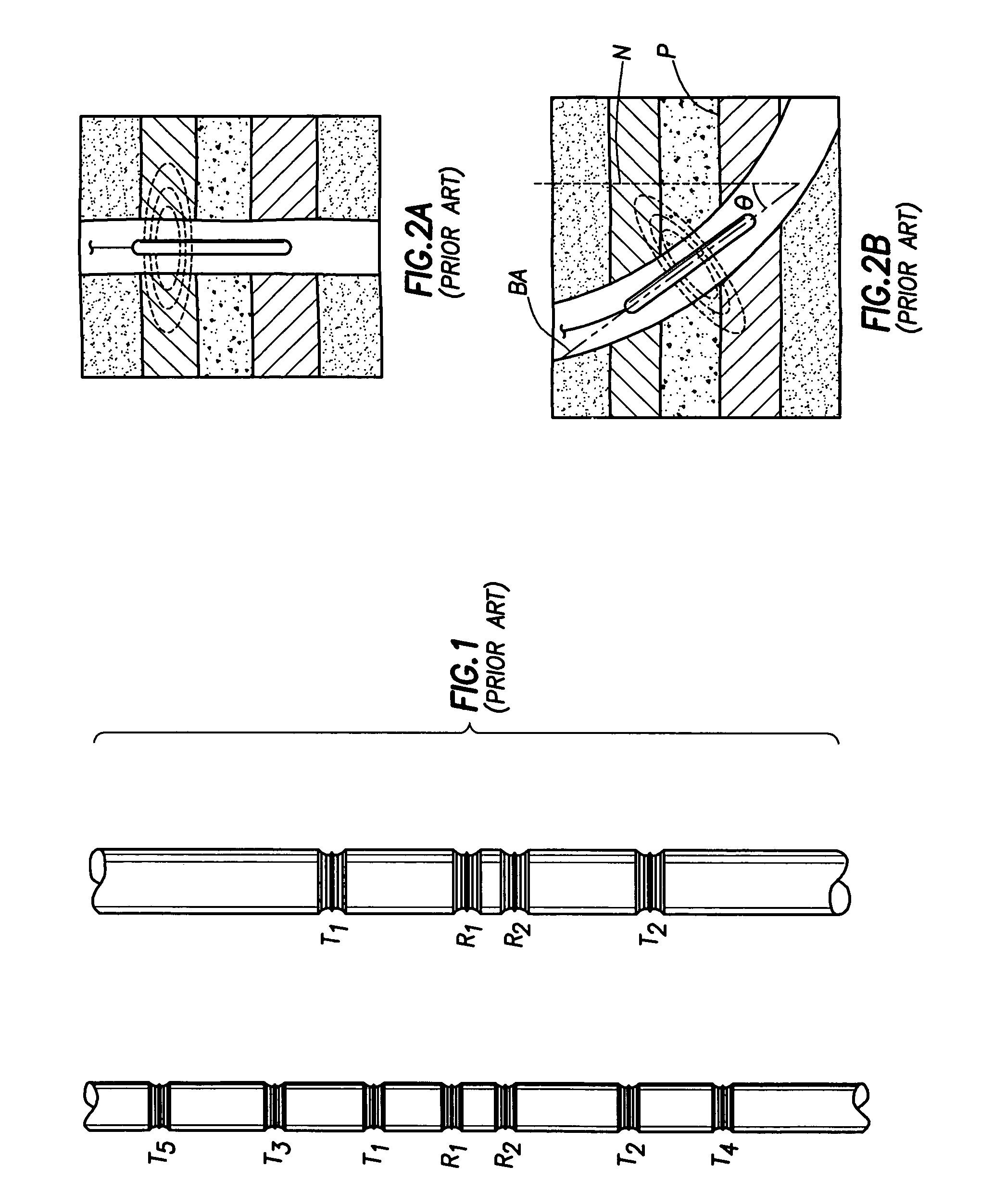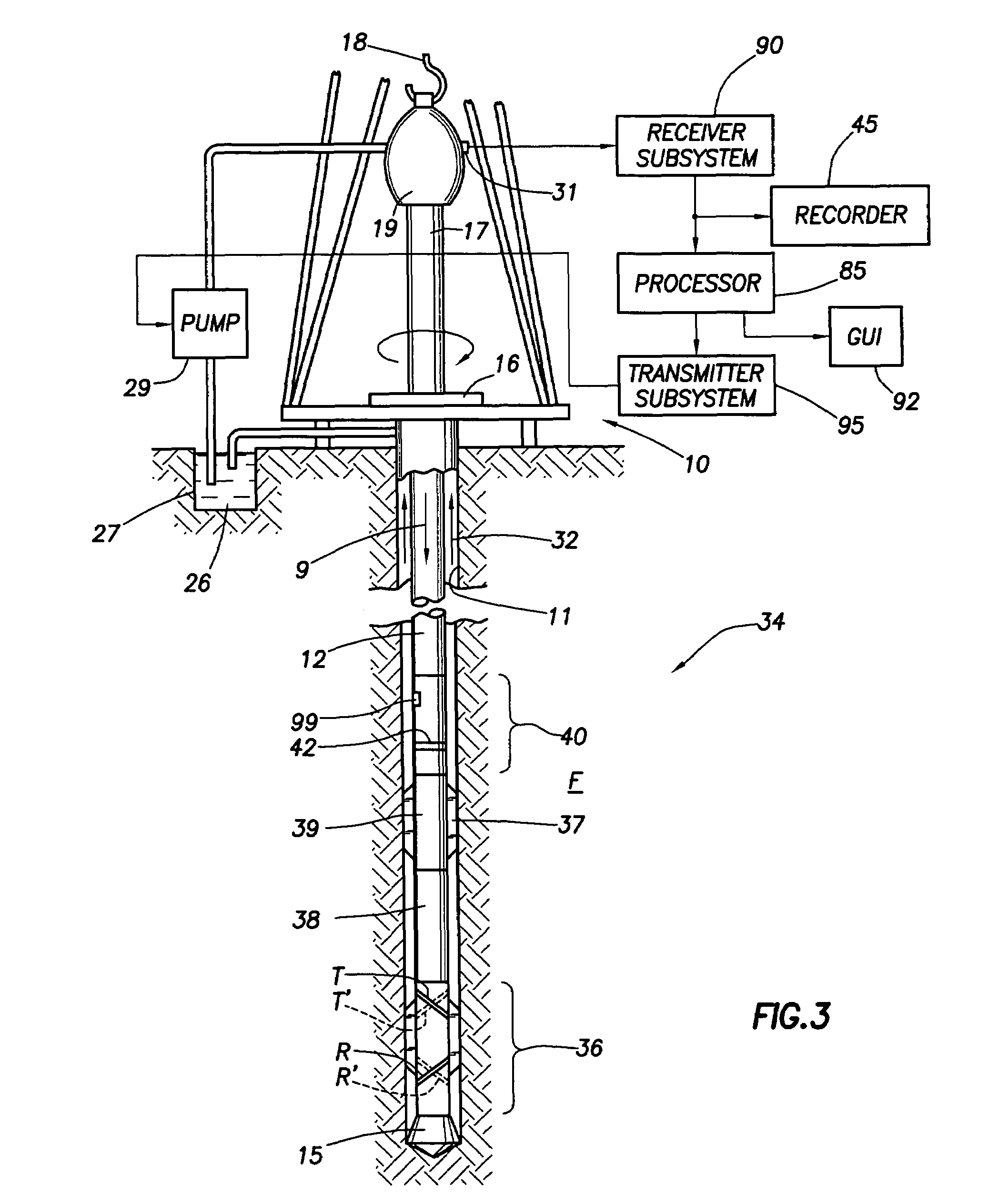Directional electromagnetic wave resistivity apparatus and method
a resistivity apparatus and electromagnetic wave technology, applied in the field of well logging, can solve the problems of drilling operators, inability to accurately depict the numerous segments of the borehole, and the response of these instruments generally cannot resolve the azimuthal variations in the conductivity of the formations surrounding the instruments, so as to improve the accuracy of measurements
- Summary
- Abstract
- Description
- Claims
- Application Information
AI Technical Summary
Benefits of technology
Problems solved by technology
Method used
Image
Examples
Embodiment Construction
[0091]FIG. 3 illustrates a conventional drilling rig and drill string in which the present invention can be utilized to advantage. A land-based platform and derrick assembly 10 are positioned over a wellbore 11 penetrating a subsurface formation F. In the illustrated embodiment, the wellbore 11 is formed by rotary drilling in a manner that is well known. Those of ordinary skill in the art given the benefit of this disclosure will appreciate, however, that the present invention also finds application in directional drilling applications as well as rotary drilling, and is not limited to land-based rigs.
[0092]A drill string 12 is suspended within the wellbore 11 and includes a drill bit 15 at its lower end. The drill string 12 is rotated by a rotary table 16, energized by means not shown, which engages a kelly 17 at the upper end of the drill string. The drill string 12 is suspended from a hook 18, attached to a traveling block (also not shown), through the kelly 17 and a rotary swivel...
PUM
 Login to View More
Login to View More Abstract
Description
Claims
Application Information
 Login to View More
Login to View More - R&D
- Intellectual Property
- Life Sciences
- Materials
- Tech Scout
- Unparalleled Data Quality
- Higher Quality Content
- 60% Fewer Hallucinations
Browse by: Latest US Patents, China's latest patents, Technical Efficacy Thesaurus, Application Domain, Technology Topic, Popular Technical Reports.
© 2025 PatSnap. All rights reserved.Legal|Privacy policy|Modern Slavery Act Transparency Statement|Sitemap|About US| Contact US: help@patsnap.com



